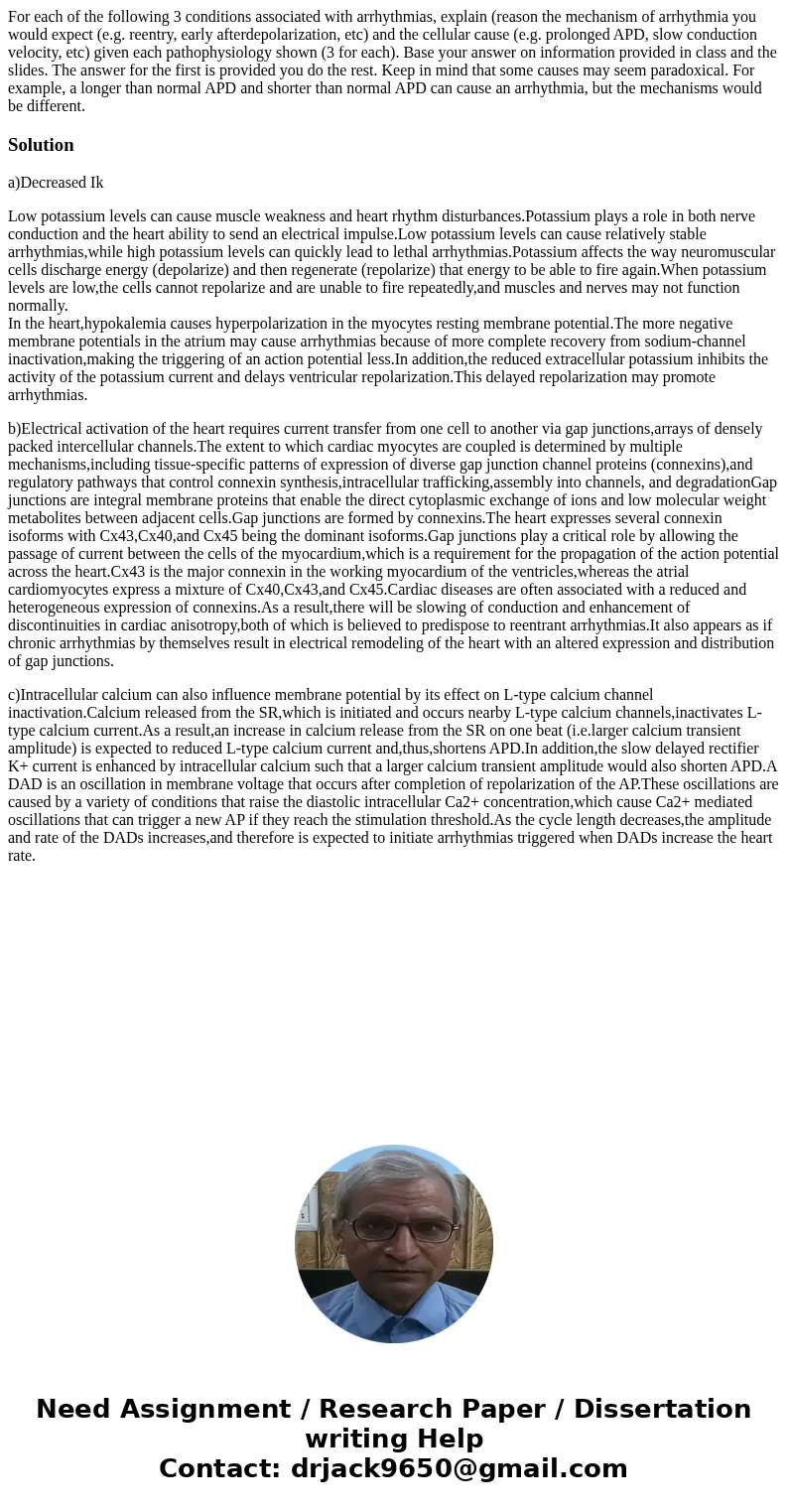For each of the following 3 conditions associated with arrhy
Solution
a)Decreased Ik
Low potassium levels can cause muscle weakness and heart rhythm disturbances.Potassium plays a role in both nerve conduction and the heart ability to send an electrical impulse.Low potassium levels can cause relatively stable arrhythmias,while high potassium levels can quickly lead to lethal arrhythmias.Potassium affects the way neuromuscular cells discharge energy (depolarize) and then regenerate (repolarize) that energy to be able to fire again.When potassium levels are low,the cells cannot repolarize and are unable to fire repeatedly,and muscles and nerves may not function normally.
In the heart,hypokalemia causes hyperpolarization in the myocytes resting membrane potential.The more negative membrane potentials in the atrium may cause arrhythmias because of more complete recovery from sodium-channel inactivation,making the triggering of an action potential less.In addition,the reduced extracellular potassium inhibits the activity of the potassium current and delays ventricular repolarization.This delayed repolarization may promote arrhythmias.
b)Electrical activation of the heart requires current transfer from one cell to another via gap junctions,arrays of densely packed intercellular channels.The extent to which cardiac myocytes are coupled is determined by multiple mechanisms,including tissue-specific patterns of expression of diverse gap junction channel proteins (connexins),and regulatory pathways that control connexin synthesis,intracellular trafficking,assembly into channels, and degradationGap junctions are integral membrane proteins that enable the direct cytoplasmic exchange of ions and low molecular weight metabolites between adjacent cells.Gap junctions are formed by connexins.The heart expresses several connexin isoforms with Cx43,Cx40,and Cx45 being the dominant isoforms.Gap junctions play a critical role by allowing the passage of current between the cells of the myocardium,which is a requirement for the propagation of the action potential across the heart.Cx43 is the major connexin in the working myocardium of the ventricles,whereas the atrial cardiomyocytes express a mixture of Cx40,Cx43,and Cx45.Cardiac diseases are often associated with a reduced and heterogeneous expression of connexins.As a result,there will be slowing of conduction and enhancement of discontinuities in cardiac anisotropy,both of which is believed to predispose to reentrant arrhythmias.It also appears as if chronic arrhythmias by themselves result in electrical remodeling of the heart with an altered expression and distribution of gap junctions.
c)Intracellular calcium can also influence membrane potential by its effect on L-type calcium channel inactivation.Calcium released from the SR,which is initiated and occurs nearby L-type calcium channels,inactivates L-type calcium current.As a result,an increase in calcium release from the SR on one beat (i.e.larger calcium transient amplitude) is expected to reduced L-type calcium current and,thus,shortens APD.In addition,the slow delayed rectifier K+ current is enhanced by intracellular calcium such that a larger calcium transient amplitude would also shorten APD.A DAD is an oscillation in membrane voltage that occurs after completion of repolarization of the AP.These oscillations are caused by a variety of conditions that raise the diastolic intracellular Ca2+ concentration,which cause Ca2+ mediated oscillations that can trigger a new AP if they reach the stimulation threshold.As the cycle length decreases,the amplitude and rate of the DADs increases,and therefore is expected to initiate arrhythmias triggered when DADs increase the heart rate.

 Homework Sourse
Homework Sourse